Best Tablets - Holiday 2013
by Jarred Walton on December 19, 2013 4:38 AM EST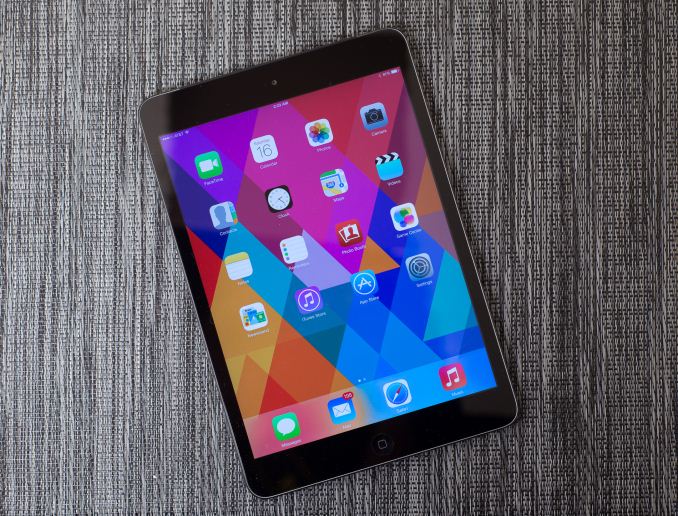
We've covered quite a few laptop options last week for those looking for something mobile for the holiday season, but one area we haven't touched on yet is tablet options. There are several ways to break things down, so let's quickly cover the bases first. You need to answer a few questions in determining the best tablet for your needs. First up: what operating system do you want to run? You have four main choices: Apple's iOS, Google's Android, and Microsoft's Windows RT and Windows 8.1. Next up, you need to decide what size tablet you want: 7”, 8”, 9”, 10”, 11”, and 13” are all possibilities, but for the purposes of this guide I'm going to just drop the largest two options, and there aren't too many 9” tablets either so really in my book it's a question of 7-8” vs. 10” (give or take). These two area will help cut down the number of choices quite a bit, but there are still additional items to consider.
Price is obviously something we need to account for, as not everyone can simply run out and buy the most expensive tablets. Intended use is another important factor – if you just need something to do some web surfing and pull up other reference material over WiFi, your needs will be far different than someone that wants a tablet with mobile broadband; similarly, people that want to play games (or have kids that will want to play games) have different needs than those that don't care much about graphics.
Finally, depending on which platform and size you've selected, you also need to decide if you want a pure tablet, something with a keyboard dock, or a hybrid device. The first two options have some overlap, as the vast majority of tablets support Bluetooth keyboards so you can add one of those to pretty much any tablet, but if you actually want a dock – and in particular a dock that adds additional battery capacity – your choices are pretty limited. Rather than trying to come up with a recommendation for every potential area, I'm going to focus on the major options that are worthy of a recommendation.
Apple Tablets
My personal feeling is that most users are going to either buy into the Apple iOS line or they're going to go with Android – and that usually means both a smartphone and a tablet for the respective OS. There are currently four major tablet options available in the iOS ecosystem (five if we add in the iPod Touch, but I'm skipping that as most people have a smartphone these days so if they want an additional mobile device it's more likely to be a larger tablet): there's the new iPad Air, the new iPad Mini Retina, and Apple continues to sell the iPad 2,4 as their faux-budget 10” offering along with the previous generation iPad Mini. (You can still find the previous generation iPad (4) and even the iPad 3 floating around online, but we'll skip those.)
For the budget conscious, let's be frank: Apple isn't for you. “Budget” and “Apple” are like oil and water – they don't mix. The least expensive Apple tablet currently for sale is the previous generation iPad Mini, priced at $299 for a 16GB model with an A5 chip. $100 more gets you the iPad Mini Retina, and even if you don't care much about the display the A7 SoC is a pretty substantial upgrade in performance. Similarly, if you still haven't purchased an iPad 2,4 I think we can simply skip that now. That means we're effectively left with two choices, and they're both pretty expensive.
The 16GB iPad Mini Retinal has a $399 price from Apple, and that's pretty much what you're going to have to pay. Meanwhile the 32GB model will set you back $499 and the 64GB costs $599. Personally, I can get by with the 16GB model with iOS, and that's what I'd go for if you're not planning on carrying around a lot of movies or music; the 32GB model ends up being more than enough for all but the biggest digital packrats, while the 64GB model ends up costing enough that I can't really recommend it, but if you want to dance you have to pay the piper.
If you're looking for the fastest iPad, not surprisingly the iPad Air is where it's at. While the iPad Mini Retina and iPhone 5S use the same A7 SoC as the iPad Air, there's no stacked RAM on the die and there's a heat spreader, which combined allow the larger iPad Air to run anywhere from 10% to 50% faster than the iPad Mini Retina. The cost starts out at $499 for the 16GB WiFi model, and as usual Apple tacks on $100 for each storage update ($599 for 32GB, $699 for 64GB, and $799 for 128GB). I'd say the 32GB model is probably a reasonable pick, but if you want to store a lot of music on your iPad you can certainly make a case for the 64GB model.
The price ends up being right up there with many budget laptops, but the A7 SoC actually manages to compete with basic Windows laptops. Add in a keyboard – I've seen quite a few options, but I'd be inclined to go with the Official Keyboard and Incase Origami or one of the many third-party Bluetooth keyboard and case options. With a keyboard, the iPad Air becomes a viable laptop replacement. I'm still going to turn to Windows laptops for my serious work like writing articles and editing images, but with a keyboard I can do about 95% of my work on a tablet and not feel like I'm missing much. Another generation or two (and perhaps some additional price cuts) and the budget laptop segment is going to be in serious jeopardy.
I'll be honest here: I'm not devoted to the Apple ecosystem by any stretch of the imagination, but mostly that's because I tend to gravitate more towards the affordable end of the spectrum. That said, if money were no object, I'd go out and buy the iPad Air 32GB or maybe even 64GB. In my opinion, the combination of SoC, industrial design, display, performance, and other features makes it the best current tablet on the market. That's not to say that I don't like Android options, but as someone that has never actually owned an Apple product other than a 4th Generation iPod Touch, I still envy those that apparently can afford the latest and greatest Apple smartphones and tablets.
Android Tablets
When we shift over the the Android market, things get far more diverse in terms of hardware, performance, pricing, quality, etc. Many if not most Android tablets feel very much like budget offerings, though not all of them are priced accordingly. There's also an issue with getting updated versions of Android for these tablets; I have an old Tegra 2 Acer A500 that never got updated beyond Android 4.0.3 (which took six months, never mind the display failing when the tablet was less than two years old), while a newer Tegra 3 Acer A700 stopped at Android 4.0.4. And such behavior is not at all limited to Acer – another “no-name” tablet that I have is also stuck on Android 4.0.4, and even the Google Nexus devices stop getting updated beyond a certain point. Part of this comes from trying to support a wider array of hardware, but regardless it still happens. Contrast that with iOS where devices tend to receive the latest OS updates until they reach the point where they're too slow (e.g. my iPod Touch 4th Gen is still on iOS 6.x); if you like getting more than six months of OS updates, Android isn't necessarily the best option.
With that said, there are a ton of Android tablets out there, with options that cater to your preference for saving money or getting a fast and recent tablet, along with size considerations as well. If all you want is a budget tablet that can browse the web and run some other apps, I'd look at the less expensive devices and be done with it. Dell sent over their Venue 8 tablet for review, and with a base price of $180 for 16GB storage and 2GB RAM with a Clover Trail Z2580 Atom SoC, it's not a bad tablet. The Venue 7 is similar but slightly smaller, with an Atom Z2560 but still with 2GB RAM and 16GB storage, starting at just $150.
Neither Dell Venue will set the world on fire in terms of performance or features, but the Atom SoC is generally much better than what you'll find in other $150-$200 tablets (i.e. the MediaTek SoCs in the ASUS MeMO Pad HD 7). On the Venue 8, Octane V1 performance for example is 3536 (in Chrome), Kraken 1.1 is 10,503, and 3DMark gives the following scores: Ice Storm 8310, Graphics 7915, and Physics 10066. You'll see that based off those results, the Venue 8 is right near the top of our Android CPU charts while the GPU is more in line with last year's hardware. Again, for the price the Venue 7 and 8 are reasonable options – and you still get a microSD slot capable of taking up to 32GB cards.
Step up the pricing scale a bit and we come to the one Android tablet that we can recommend without any reservations: the Nexus 7 (2013). Priced at $229 for 16GB and $269 for 32GB, it's a decent bump in price over the Venue 7 and 8, but it has a faster GPU (by about 30%) and a much nicer 1920x1200 LCD. You can read more about the Nexus 7 in our full review, but really the only complaint I can raise is the lack of a microSD slot. (Google can say it's difficult and confusing or whatever, but I use a 32GB microSD card and have no issues with it on another tablet.)
Having covered the smaller Android devices, all that's left is to pick a good 9-10” Android tablet. We actually talked about this the other day, and to be honest there's no single Android tablet where we can universally recommend it. The Nexus 10 is probably the closest we can come, but even that has some issues and it's certainly due for an update. (Performance is basically similar to the Venue 8 it seems, which costs half as much as the Nexus 10). Pricing is also a tough spot, with the 16GB model going for $399 and the 32GB model going for $499 – not quite as bad as Apple's iPad Air, but then it's also not as good as the iPad Air (IMO). The good news with Nexus devices is that at least you'll get a reasonable number of OS updates – both the Nexus 7 and 10 now have Android 4.4 (KitKat) factory images available.
If you're just after a 10” Android tablet that won't break the bank, there are plenty to choose from, but nothing else really stands out enough to warrant an explicit recommendation. Figure out your price range and then look at the options and see what you can come up with. Then go search for some reviews and try to decide if there are any deal breakers – and getting some hands-on time with your potential purchase is always nice.
And as a final comment on the Android side of things, while I understand the idea behind the Kindle Fire HDX, the lack of Google Services (Google Play) basically kills that for me. It's not a bad tablet, but it would be much better in my book if it had the full set of Android software.
Windows Tablets?
If coming up with some solid recommendations for Android tablets was tricky, doing so for Windows is even more so. Again, we discussed this among the AnandTech editors and not a single one of us was really gung ho on Windows RT tablets. Windows RT is basically a cut down version of Windows 8.1 that's not worth the time or money unless all you want is something to run Internet Explorer and Office (this was Brian's take on what he does with his Surface 2). Note also that you need bare minimum 32GB on a Windows tablet (half of which gets eaten by the OS), so while the Windows devices start with twice the storage, you're really getting about the same usable amount of storage.
Considering the prices on good Android tablets, it's really a tough sell right now convincing anyone to spend $450 on a Surface 2. If you want MS Office on a tablet, great, but there are less expensive options. Perhaps you're one of those that likes WinRT, though, and you're welcome to it. Even the original Microsoft Surface is still going for close to $300, though, so unless you can find a much lower price I'm inclined to look for other options. Specifically, let's look at a full Windows 8.1 tablet....
Dell shows up again, this time with the Venue Pro 8 – available with 32GB for $250 or 64GB for $312. Considering you get a full copy of Windows 8.1, the price is pretty amazing; you also get Intel's new Bay Trail platform with Atom Z3740D, which should actually run quite well – I'd love to get the chip in an Android tablet, incidentally (for closer to $200). The 2GB RAM may present some problems if you try and do anything too crazy, but desktop mode on an 8” 1280x800 display isn't the primary draw I suspect, and the Modern apps should work okay with the limited amount of RAM.
The other Windows tablet we could really agree was worth getting is the Microsoft Surface Pro 2, but that's almost more of a laptop that's missing a keyboard than it is a tablet – and it's priced accordingly. (Add the keyboard and it really is a laptop replacement.) Don't get me wrong: the Surface Pro 2 has a lot going for it, but when I think of tablets I'm rarely even considering a $900 device. There are people that really love the Surface Pro, and the Surface Pro 2 ups the ante with improved battery life courtesy of the Haswell CPU. It's a tablet that can actually be used for productivity, thanks to the ability to run all the standard Windows applications. If you want a good Windows 8.1 tablet, this is currently the best option, but while it has some clear advantages over an iPad Air, pricing isn't really one of them.


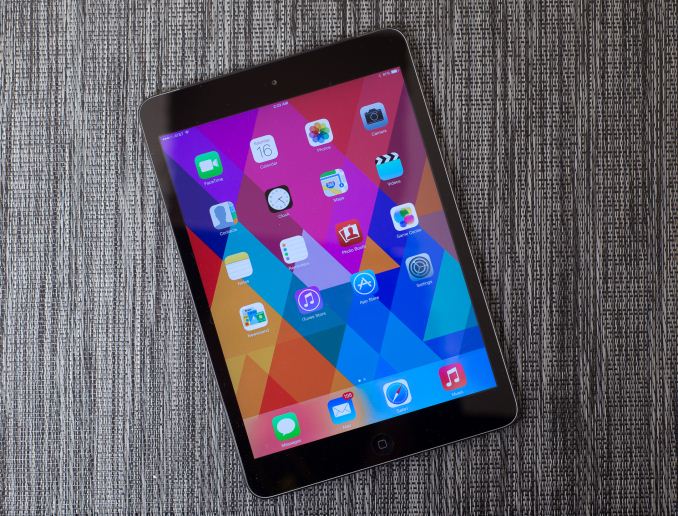
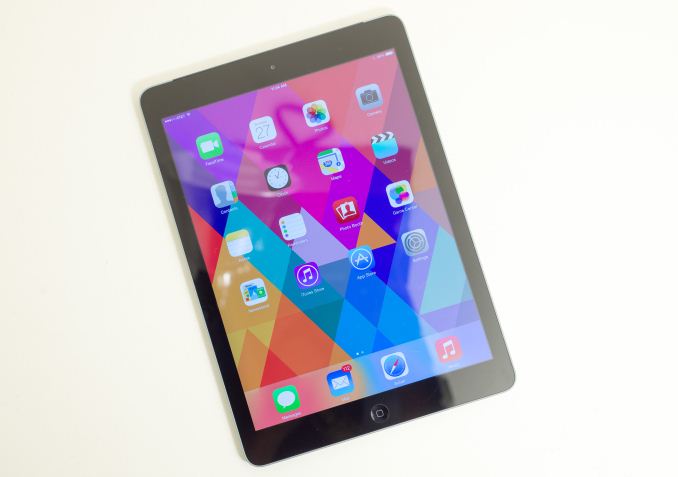
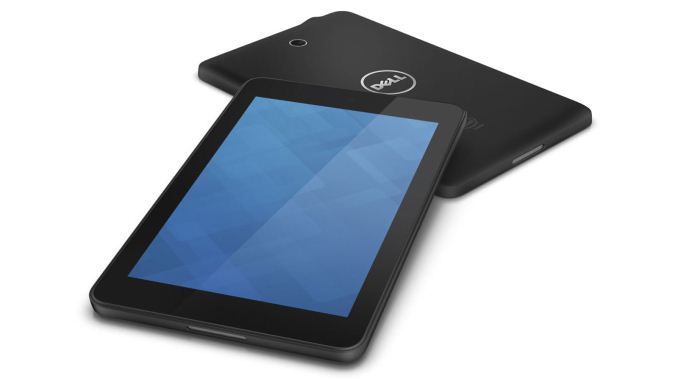
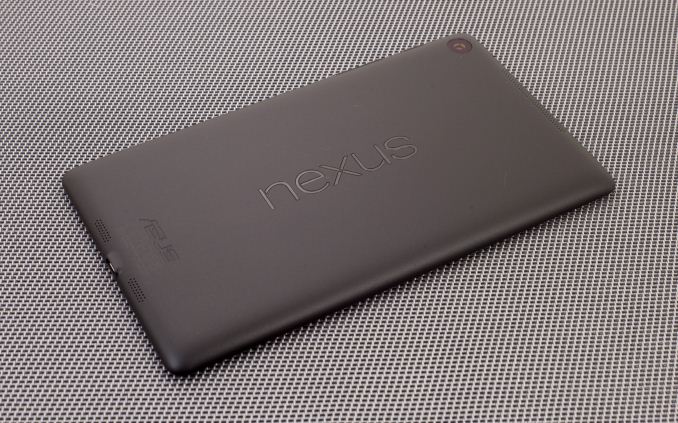
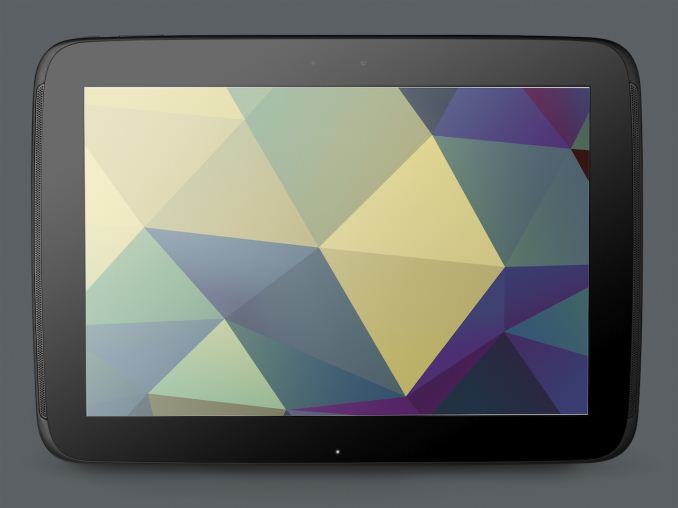
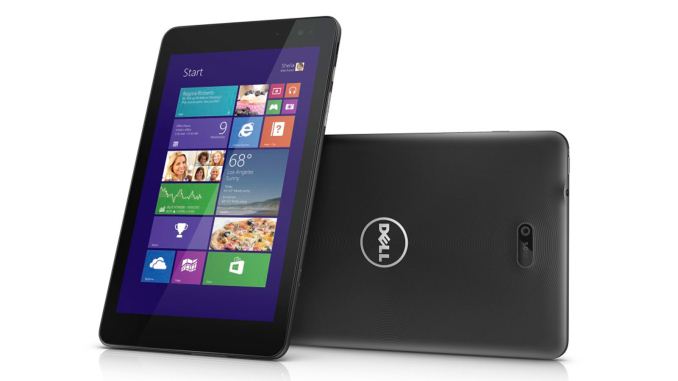
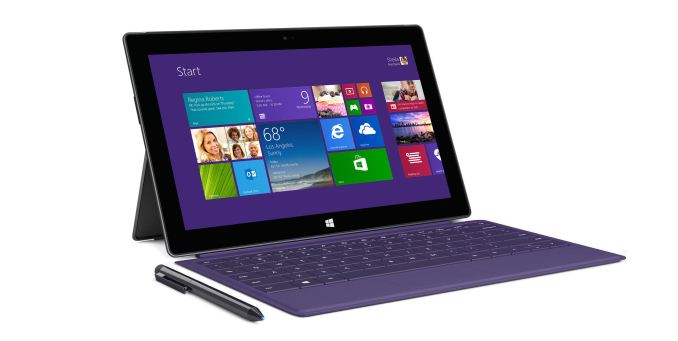








107 Comments
View All Comments
mike8675309 - Thursday, December 19, 2013 - link
A little surprised at no commentary related to the Kindle Fire line. Depending on your personal use case for a tablet, the Kindle Fire products can be quite compelling. Even more so with their recent offer of zero down financing on things are already pretty inexpensive.As far as Windows RT, I personally feel that a Surface Pro 2 unit is still too expensive for such limited software options. It can be the greatest piece of hardware architecture on the planet, but if it can't do things I want to do it's already going to have problems showing up on my radar.
kyuu - Thursday, December 19, 2013 - link
I assume you mean the Surface 2, not the Surface PRO 2? The Surface Pro 2 is expensive, sure, but it's not software limited at all.mike8675309 - Thursday, December 19, 2013 - link
yep, that's what I ment... silly me.Hrel - Thursday, December 19, 2013 - link
Based on the reviews on this site I'd say the Kindle fire and Asus TF the top 2 tablets.azazel1024 - Thursday, December 19, 2013 - link
I am also a little suprised that the T100 didn't rate a mention.Lately its been available for $389 for the 64GB model and it was once $349 (for a day on Amazon). I snagged mine repackaged for $339 as a warehouse deal. Its sitting under my tree right now to be unwrapped. I tried it out at a bigbox near me a couple of weeks ago and was suitably impressed.
It doesn't seem like the awesomest thing around, but the price is super cheap and overall I came away with a good impression. I wouldn't be happy with it if it was a $500 tablet (it needs better build quality and a somewhat nicer screen, more RAM and the z3770 would be nice too), but for the price it seems awesome.
It is good enough that the build quality and any other nits do not make it a bad experience at all. Its a rather nice experience, it is just that if it was a lot more expensive, it should be an even better experience.
Other than lacking an active digitizer and 1080p screen, it seems like a better option than the Surface 2 if you want a full windows experience IMHO. The 8" category, the Dell 8" does seem like the current best deal.
I am very interested to see what comes out of CES next month with Windows 8.1 64-bit builds supporting connected standby soon (I think next month is what MS stated).
Not that I am in the market for a new tablet with the T100 under the tree, but I am just curious the direction of the market. Though as cheap as it was, talk to me next year about Airmont arch and good higher end 2-in-1 options and I might just be trading up after only a year.
mutil0r - Thursday, December 19, 2013 - link
"Neither Dell Venue will set the world on fire in terms of performance or features, but the Atom SoC is generally much better than what you'll find in other $150-$200 tablets (i.e. the MediaTek SoCs in the ASUS MeMO Pad HD 7)."Firstly I'm confused why Brian and Anand haven't contributed to this guide given that they're more familiar with iOS and Android.
Secondly, that statement of yours about a Clovertrail being better than anything in the sub-$200 market is a bit shocking to say the least. Have you not heard of the evga Tegra Note 7 that your own Brian Klug reviewed? At $199, it pretty much blows away anything sub $200 by a mile, and pulls its weight quite well above that price tag too. It does have a somewhat mediocre display from my personal experience of owning one for 2 weeks now, but I'm quite sure apart from the previous gen Nexus 7, nothing sub $200 does better.
Recommending some crappy Dell that will likely never see any updates is just flat out wrong on your part.
kyuu - Thursday, December 19, 2013 - link
It's Clover Trail+, and I'd expect the CPU performance to be comparable if not better than Tegra 4's. GPU performance isn't as good, but I question how much that matters unless you are really set on playing high-end games on an 7-8" Android tab. Maybe if you're into emulation?If the screen on the Venue 8 is anything like the screen on my Venue 8 Pro, then it's actually quite good, so that's one advantage it would have over the Tegra Note that you say has a mediocre display. Dell's new Venue tabs are actually pretty nice pieces of kit. I would recommend you actually try them instead of bashing them blindly.
Finally: what makes you think the Tegra Note is any more likely to see extended update support than the Venues?
mutil0r - Thursday, December 19, 2013 - link
lulwut?I just ran the exact same benchmarks Jarred has listed for the venue 8, on my note 7.
Octane 4103 vs. 3536 on the Dell
Kraken 5993 vs. 10,503 on Dell (since the result was in ms, lower = better?)
3Dmark 17892/19566/14605 vs. 8310/7915/10066
I think you're giving way too much credit to the ancient pos that Clovertrail+ is. Aside from the S800 on certain CPU and GPU benchmarks, I think Tegra 4 does quite well in the soc space.
Apart from the subjectively better display quality, the dell has nothing on the evga device. I was pleasantly surprised by how usable the stylus is on the evga (was fully expecting it to be a throw away). That's a nice bonus on top of everything else!
Seeing how many updates they are pushing to shield, i dont think I would be wrong to say the tegra note7 will also get similarly frequent updates (same company, soc, OS etc.). How about Dell's track record for android tablets?
More importantly on principle, how can Jarred recommend a device they havnt reviewed, unless these guides are promoted/supported by vendors or manufacturers, in which case that should be clearly stated.
iamlilysdad - Thursday, December 19, 2013 - link
I didn't read all the comments, so sorry if this was already mentioned, but most Nexus devices get updates for at least two years. Even the Galaxy Nexus, which stopped officially at 4.3.BMNify - Friday, December 20, 2013 - link
Wrong information, Galaxy Nexus was supported for just 18-19 months, so your Nexus devices get updates for "Atleast" 2 years is factually incorrect.